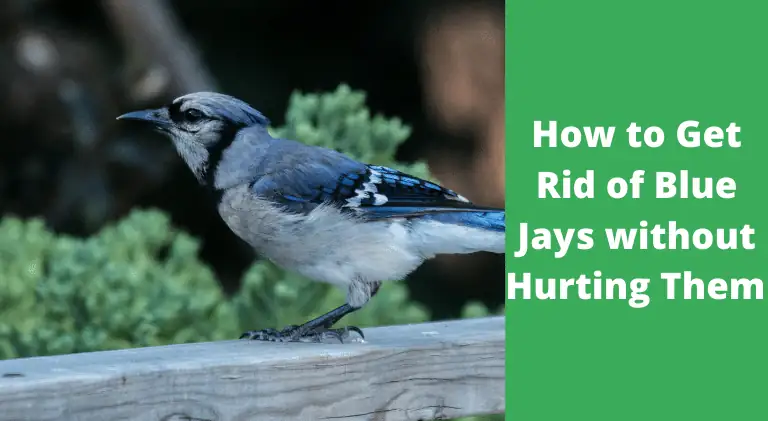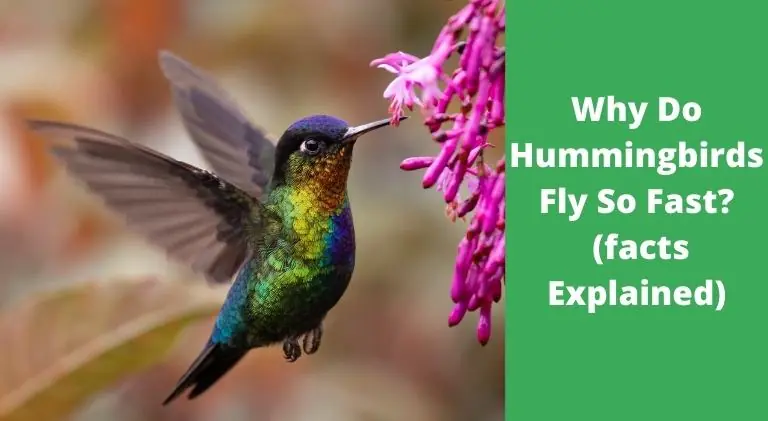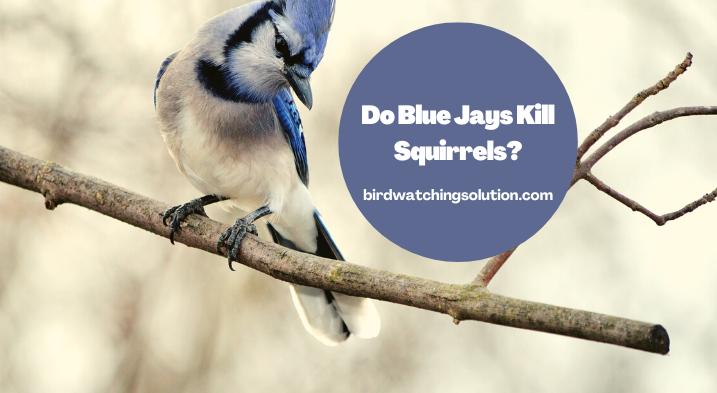Why Do Blue Jays Peck Wood? Discover Interesting Facts
Blue Jays are a common sight in many North American backyards, known for their striking blue and white plumage. But have you ever wondered why these birds seem to be constantly pecking at wood?
Blue Jays are known to peck wood to find insects hiding under the bark. They also peck wood to create nesting sites, marking their territory and communicating with other flock members.
But there is more to this behavior than meets the eye. The impact of Blue Jays pecking on wood can be significant, causing damage to both trees and buildings.
And while this behavior may be a nuisance for homeowners, it also has implications for the birds and other species that call the same trees and buildings home.
Keep reading to learn more about this fascinating aspect of Blue Jay behavior and what can be done to mitigate the damage caused by their pecking.
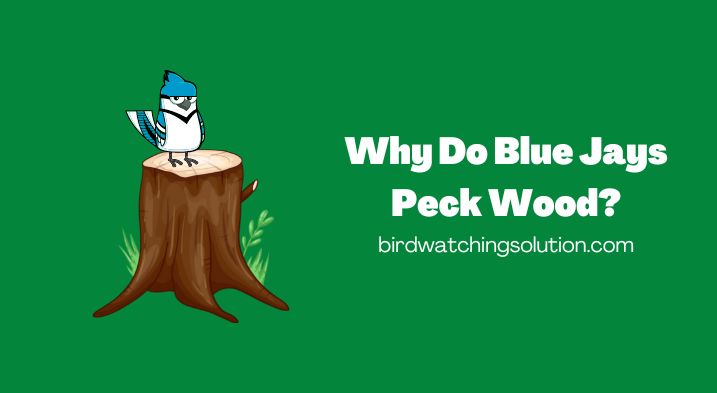
Why Do Blue Jays Peck Wood – 10 Common Reasons
As you know the most commonly known bird for pecking wood is a woodpecker right? You might be wondering how come a blue jay peck wood and what for? Well, blue jays peck wood for many reasons. Here are the top 10 most common reasons why:
1. To Find Insects
Blue Jays are omnivores, meaning they eat both plant and animal matter. One of their favorite food sources is insects hiding under the bark of trees and logs.
By pecking at wood, Blue Jays expose these hidden bugs so they can catch them and enjoy a tasty snack!
This is usually common in the spring and summer seasons when those meaty insects try to hide from the heat. Blue jays, being intelligent corvids know how to find them and feast on them.
Therefore, you might have noticed them pecking different tree barks, windows, and fences in order to dig out the insects.
2. To Make Nesting Sites
Blue jays are known to build nests in trees and other structures. To make these nesting sites, they peck away at the wood around the chosen tree or structure.
This makes it easier for them to shape their nests and provides added insulation from the elements.
Blue jays, just like other Corvidae, are remarkable engineers when it comes to nest building. As bird watcher often enjoys recording their nest-building sites.
It reminds me of how precisely nature is made.
3. To Mark Their Territory
Blue Jays are highly territorial birds, and part of their territorial behavior involves pecking at wood to leave behind marks or signals for other members of their flock.
By doing this, they can communicate with other Blue Jays and protect the area around them from outsiders.
These birds are the best when it comes to protecting their nests, eggs, and their babies from potential predators.
Although they are small they produce loud noise and start attacking whenever they find someone coming near to their nesting.
This is a common behavior in corvids and besides them, crows are a perfect example. If you want to see it with your own eyes try stealing an egg from a crow’s nest lol they will call a war on you.
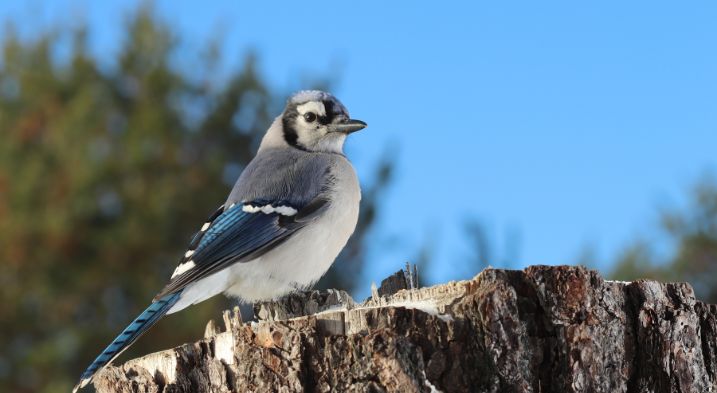
4. To Sharpen Their Beaks
A beak is an important tool for any bird, and sharpening it regularly helps them get the most out of it during hunting and feeding.
For some species, such as Blue Jays, pecking away at wood serves as a way to sharpen their beaks over time.
This keeps them in tip-top shape so they can use them effectively while hunting or preening.
5. To Show Off & Attract Mates
For some birds, such as Blue Jays, pecking at wood serves as a way to attract mates and show off their strength and agility.
By pecking away at wood, they can demonstrate their ability to find food, build nests, and mark territory.
This is a great way for them to prove themselves worthy of a potential mate and increase the likelihood of successful reproduction.
6. To Play
Birds are known to play with objects just like humans do to hone their hunting skills or simply pass the time. For some birds, such as Blue Jays, pecking at wood serves as a form of play that helps them stay sharp while also providing entertainment value.
I remember when I was in the hostel during my Master’s degree, I used to have a common room where this blue jay would come and peck on the window. It was both annoying and fascinating at the same time.
Annoying in the sense that it was pecking the window but fascinating to watch the bird playing with its beak doing something that wasn’t necessary in terms of feeding or survival.
7. To Gather Materials For Nests
Blue Jays often peck away at the wood to gather materials for their nests. This can include bark, twigs, leaves, and other items which they use to create a comfortable home.
By doing this, they can provide a safe place for their young to grow and develop before venturing out into the world.
8. To Show Aggression
In some cases, Blue Jays may peck away at wood to show aggression or signal dominance.
This is often done when other birds invade their territory or get too close for comfort. By doing this, they can ward off potential predators and protect their young from harm.
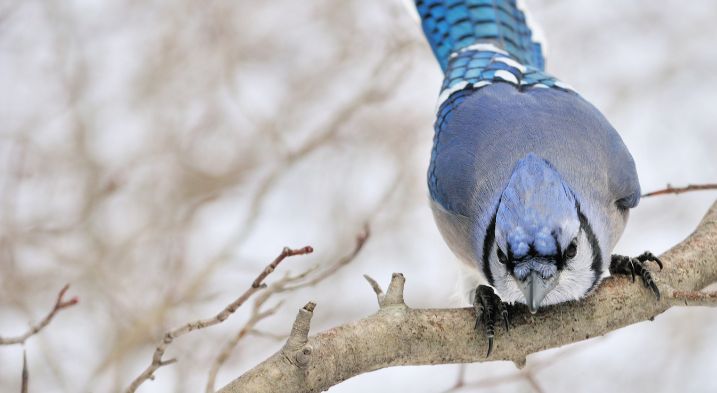
Can a Blue Jay Get Hurt By Pecking Wood?
Now that you have learned some of the most common reasons behind a blue jay pecking wood, you might be wondering whether they can get hurt by doing so or not.
The answer to this question is yes! When a blue jay pecks something hard, it can cause tiny fractures in its beak which may lead to infection or other serious health problems.
In addition to this, their skulls and brains aren’t designed for pecking just like a woodpecker.
On the other hand, a woodpecker can safely peck wood because it has a specially designed skull that protects it from the force of pecking and its beak is thickly padded.
Besides that, a woodpecker has strong tail feathers and claws which are used as perfect stabilizers when pecking wood.
This allows them to maintain balance while pecking the tree trunk with a spectacular speed of around 7 meters—23 feet—per second.
Apart from that, when a woodpecker’s beak reaches the tree trunk it slows down about 1200 times the gravitational force.
However, things are not limited to this only. The skull structure and the specialized tongue of the woodpecker also play a vital role here. Further information can be found in an article written by researchers of tedium.com about the skull and tongue composition.
So the conclusion is yes a blue jay will get hurt by pecking wood because its beak, skull, and tongue are not designed for this action.
Are Blue Jays Related to Woodpeckers?
No, blue jays are not related to woodpeckers. They are members of the Corvid family, which includes crows and ravens.
Blue Jays tend to be larger than woodpeckers, with heavier bodies and long tails. Blue Jays also have bright blue feathers, as opposed to the dull brown or black feathers that are typical of woodpeckers.
Blue Jays also have a very different diet than woodpeckers, typically preferring to eat fruits, nuts, and seeds instead of insects or grubs. So while they may look similar, blue jays and woodpeckers come from two very different families.
Blue Jays are incredibly smart and curious birds.
They have been known to peck at wood for a variety of different reasons, ranging from playtime to territorial defense. This behavior can cause them to harm if they’re not careful, however, as their beaks aren’t designed for the tough surface of tree bark or other hard objects.
Did You Know: Woodpeckers have zygodactyl feet which have two toes pointing forward and two toes pointing backward, this allows them to cling to vertical surfaces while they are pecking at the wood.

What Do the Holes Made By Blue Jays Look Like?
Now you might want to know more about the holes created by blue jays and what to do they look like.
As mentioned earlier, a blue jay is not related to a woodpecker by any mean and it simply lacks the anatomy of a woodpecker which allow them to safely peck the tree trunk and make a hole.
Therefore, when a blue jay pecks the wood it makes shallow and small holes in the trees instead of deep ones like woodpeckers do. In some cases, these holes might be just scratches or marks on the surface of the bark.
The shape of these holes depends on how hard and long a blue jay has been pecking and may appear as irregularly shaped spots or dots in the area.
How To Stop a Blue Jay from Pecking Wood?
Since you have learned that blue jays can get hurt if they peck wood, it is important to keep them away from the tree and other hard objects. Some of how you can do this are:
Deploy a Fake Raptor in Your Backyard
The first effective method is to scare them off with something scary for them. To do this, deploying a fake raptor in your backyard or near the tree should work.
You can easily get a raptor decoy from amazon or your local store which should be enough to keep the blue jays away.
Cover the Tree with Netting or Bird Spikes
Another way to stop a blue jay from pecking wood is by covering the tree with bird netting or bird spikes.
The netting will keep them away from the area, while the spikes will make it difficult for them to grip the tree and work their claws to start pecking at it.
Install Sound Deterrents
Sound deterrents are also effective at keeping blue jays away, as they have sensitive hearing which can easily be disturbed by loud noises or music.
You can either buy one of these devices online or build your own using an old radio and some DIY tricks.
This should be enough to keep them away from the tree and your backyard.
Hang Something Shiny and Reflective
To scare them away and discourage them from pecking your windows and other wooden substances, you can hang something shiny and reflective from a tree branch or nearby post.
This could be anything from old CDs, DVDs, foil strips, or even just some pieces of metal. The blue jay will see the reflection and think that there is an intruder in the area and fly away.
Final Thoughts!
So Why Do Blue Jays Peck Wood? Well, it’s a combination of instinct and curiosity that leads them to do this. While their beaks are not designed for pecking wood, they can still cause some damage by making small holes in the tree bark or scratching at it.
Therefore, if you want to stop a blue jay from pecking your trees, you should try out one of the methods mentioned above such as deploying a fake raptor, covering the tree with netting or bird spikes, installing sound deterrents, or hanging something shiny and reflective from nearby posts.
This will help keep them away and protect your trees from further damage.
We hope you have learned something interesting and found this article helpful!
If you still have something in your mind don’t forget to share it with us using the comments section below!




